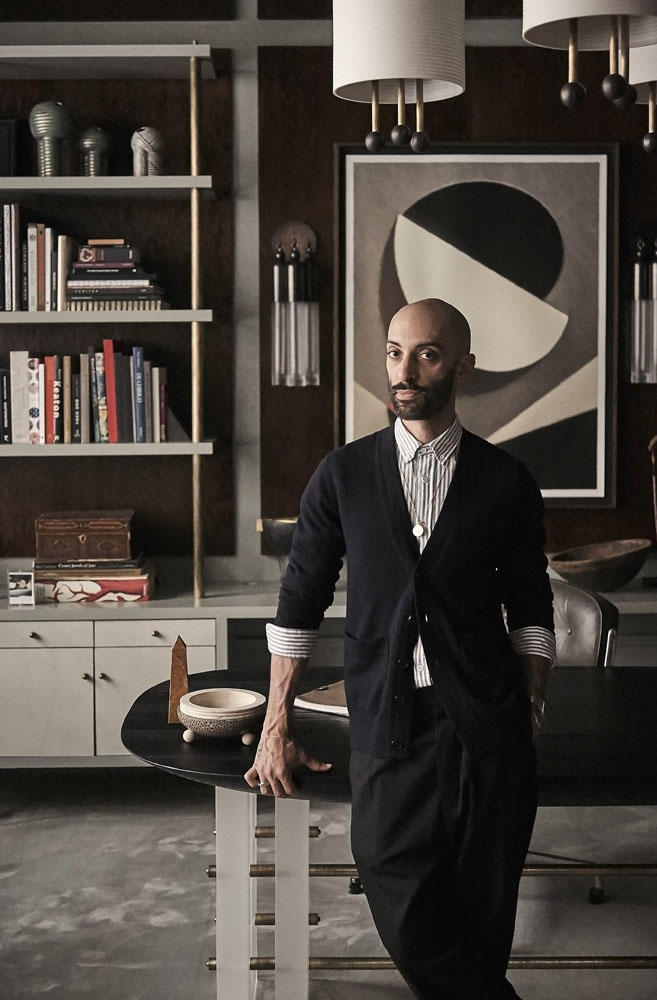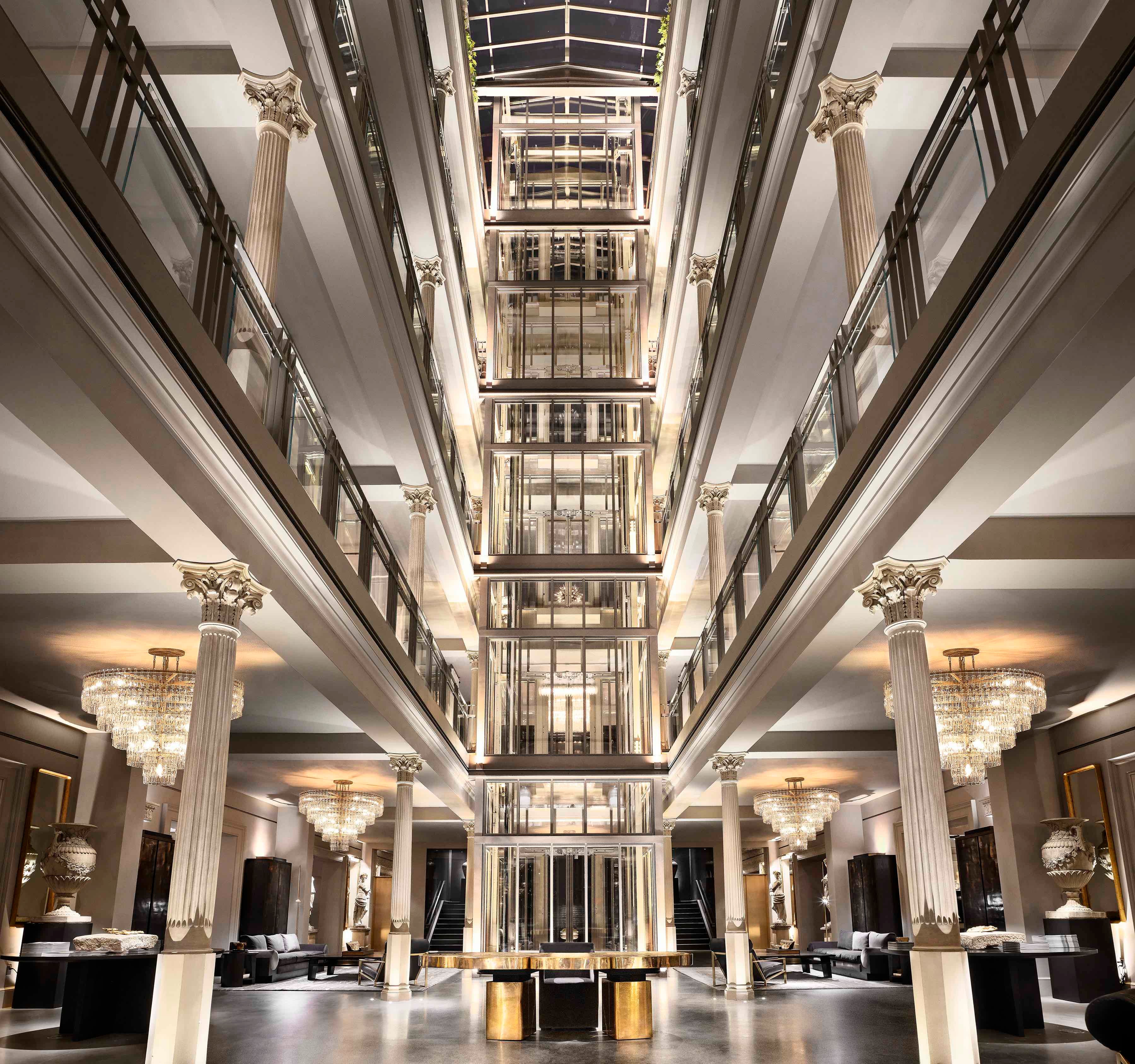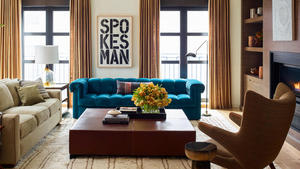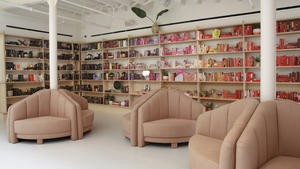As the 21st century teeters between its teens and its twenties, it’s a perfect time to take stock of an eventful decade. We’re exploring the forces that have shaped the design world over the past 10 years. Next up, BOH editors weigh in on the companies that have defined the era.
Spoiler alert: It’s mostly tech companies. Which is not to say that trade brands had a sleepy decade—far from it. Relative newcomers like Urban Electric Company have grown flourishing enterprises in a time when American manufacturing has been on the ropes, while legacy brands like Stark and Kravet are experimenting with new ways to address a shapeshifting market. But it’s undeniable that the strongest winds of change have been blowing from Silicon Valley. Below, we take a look at eight of the companies that have had an outsize influence on the design industry over the past 10 years.
Pinterest
Fittingly, the image-hoarding megaplatform launched at the dawn of the decade: January 2010. Little did its founders suspect what a profound effect it would have on the delicate matter of designer-client relations. On the one hand, Pinterest has unquestionably fueled an increasingly ravenous cultural appetite for interior design. On the other, it has created a generation of design clients whose expectations are informed by the limitless, frictionless internet—a sentiment that anyone who has received an 800-pin board titled “Bathroom fixture inspo” from a client can relate to. How designers feel about Pinterest largely depends on the designer. But one thing’s for sure—they have feelings.
Instagram
New parents often struggle to remember their lives before they had children. Likewise, most in the design industry have a hard time remembering what business was like before Instagram. Whether it’s a long online flirtation or a quick hello, most designers now cross paths with clients over the platform in some form; and those who have managed to reach influencer status can reap the benefits of sponsorship partners and free product. The Instagram economy has rewired the incentives in the design business—now, a young designer can launch a career almost purely by being good at the ’gram. While the platform’s rise to ubiquity has certainly been good for many, the industry’s reliance on a single source for inspiration, networking, lead generation and marketing has some worried. “As designers, we really are the group that crosses boundaries and cultures and needs visual inspiration,” California designer Breegan Jane told BOH. “If Instagram is only showing the same thing over and over again, that’s going to lead to a very stale world. … We’ve put our visual and artistic minds in the hands of a computer.”
RH
Ten years ago, RH was Restoration Hardware, a somewhat sleepy California retailer that sold home goods and tchotchkes. Led by CEO Gary Friedman, over the past decade it’s become a $4.5 billion powerhouse for high-end home furnishings. Leaving aside the controversy over knockoffs and tree-killing catalogs, Friedman’s genius was to identify a slice of the market hovering above the West Elms and Pottery Barns of the world (both of which he helped shape, it should be noted). As it turns out, it’s quite a thick slice. Over the past decade, Friedman’s company has brought the aesthetic, the materials, and in some cases the actual artisans from the world of high-end design to a wider audience—at an accessible(ish) price. And he did it all without an Instagram account (Friedman’s company famously eschews social media). Some designers hate RH. Some love it. None would deny it has forcefully become part of the conversation.

Apparatus
It may feel like whiplash to go from a multibillion-dollar behemoth like RH to a boutique lighting company, but bear with us. Founded in 2011 by former fashion pro Gabriel Hendifar and PR exec Jeremy Anderson, Apparatus brought the theatricality of performance art and the buzzy hype of an up-and-coming band to the trade. Its collections are released as narrative “Acts,” its showrooms are moodily immersive, its parties have become the stuff of legends—and it continues to sell expensive lighting to a rapt fan base. The point is not so much that trade makers should all be as joyously avant-garde as Apparatus, but that, in a world dominated by larger players, the smaller brands that thrived over the past decade are the ones who knew how to tell their own stories.
The Robert Allen Duralee Group
In 2017, fabric giants Robert Allen and Duralee got married. Two years later, the merged entity went bankrupt, unable to shed itself of punishing debt or resolve confusion between its two computer systems. BOH has covered the story extensively in all its gory specifics, but in general terms, RADG’s troubles point to the challenges that large-scale legacy players have faced in a tumultuous decade for the design industry—especially if their plans for the future are rooted in the past.
Amazon
You might have noticed a certain impatience creeping into the course of business over the past decade. There’s a reason for that, and its last name is Bezos. Amazon was founded in 1994, but over the past decade, the company has consolidated its control over, well, everything. A byproduct of the company’s dominion over land and sea is that even people who don’t use Amazon to do business are judged by its standards of speed and convenience—including designers.
For clients who can buy pretty much everything else in their lives with free two-day shipping, waiting eight weeks for a sofa feels increasingly unreasonable. Some trade brands have compensated by emphasizing the handmade quality of their products, marketing around a “we’re worth the wait!” strategy. Others are in the midst of a revamp to their supply chain and e-commerce platforms. However they react, design world companies have come to accept that, going forward, business will be done at Amazon speed.

1stdibs
1stdibs started in 2001 as a listing site for antiques dealers, a way for customers around the world to shop Paris’s famed Marché aux Puces. It wasn’t until 2016, however, that 1stdibs fully embraced e-commerce, moving from a site that connected buyers and sellers to becoming “fully transactional.” The change certainly ruffled feathers in the antiques trade—some dealers left the site in protest. However, bringing the frictionlessness of Amazon-like e-commerce to resold luxury goods has largely been a winner for the platform, and thousands of designers have made the site part of their everyday toolkit. In the next decade, the company’s challenge will be to replicate its success selling antiques for its new and custom categories, while contending with heavyweight competitors like Chairish.
Laurel & Wolf
Not long ago, conducting interior design online sounded like a joke, or the premise of a silly science-fiction subplot. In 2014, e-design platform Laurel & Wolf launched, and quickly attracted thousands of customers, not to mention millions in venture capital funding. Five years later, the company crashed and burned, a subject BOH has covered in some detail. However, those who assumed that the company’s demise was the death knell for e-design were mistaken. Mere months later, competitor Havenly netted a $32 million round of funding to build out an in-house furniture line and market more heavily to consumers; Modsy, its closest competitor in the e-design space, continues to grow. The past decade has demonstrated that there is a demand for e-design. The next one will determine just how much.



























